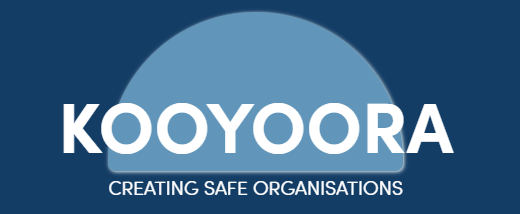How We Communicate Matters: Insights from Our Team Communication Training
At Kooyoora, communication is central to everything we do, not only in how we support the client organisations and communities we work with, but in how we work together as a team. In April (2025) we had the opportunity to deepen this capability through a full-day workshop focused on Effective Communication for Personal and Team Success with communication specialist Leah Mether.
As a small, flexible team working across Australia and New Zealand, we know that trust, transparency, and clarity are essential to how we operate. Leah’s training helped us take a closer look at how we communicate with each other, and how we can strengthen those behaviours in service of our shared purpose: to help organisations remain safe, fair, and free from abuse.
Embedding Core Communication Behaviours at Kooyoora
Together, we committed to three core communication behaviours that we’ll continue to embed in how we work:
1) Look for Learnings
Reflection is key to growth. This behaviour is about pausing to consider what worked and what didn’t, not only when things go wrong, but when things go right. When we take time to reflect on both successes and setbacks, we’re better placed to learn, improve and grow as a team.
Looking for learnings helps us move away from blame and towards shared responsibility. It’s not about getting stuck in what went wrong, but about asking, “What can we take from this?” It’s a mindset that strengthens both individual insight and collective learning.
2) Get Curious, Not Furious
Curiosity is a communication superpower. It helps us stay calm under pressure, consider other perspectives, and manage disagreement without escalating into conflict. When we lead with curiosity, instead of certainty or assumption, we remain open-minded and willing to listen.
Disagreement isn’t the problem, how we respond to it is. By asking questions instead of jumping to conclusions, we create space for better understanding, less reactivity, and more productive conversations. It might be as simple as saying, “Help me understand where you're coming from,” or “Tell me more.” These small shifts create a more respectful and connected team culture.
3) Keep Us Posted
Working remotely and flexibly means we can’t rely on hallway chats or incidental updates to stay across what’s happening. To function well as a team, we need to be intentional about keeping each other in the loop.
This isn’t about micromanagement or oversharing, it’s about making sure we all have the context we need to work effectively. When others know your availability, priorities and movements, they can plan, collaborate and support more easily. It reduces assumptions, avoids crossed wires, and keeps things running smoothly.
A quick update, a shared channel, or simply flagging when you’re under pressure or stepping away helps manage expectations and maintain trust. It’s a simple habit that can make a big difference.
Making the Learning Visible
To keep these commitments front and centre, we’ve developed a set of visual reminders that break each behaviour down into practical, everyday actions. Having visual aids helps reinforce what we’ve learned and makes it easier to apply these behaviours in real-time. These posters are now part of our shared language and used as active tools that support how we embed these behaviours into our culture.
Putting It Into Practice
As Leah reminded us in the workshop, “Knowing what to do is one thing. Doing it is another.” It’s not enough to attend a training and tick a box, the real impact comes from applying the learning consistently over time. That’s why we’re finding ways to revisit and reinforce these commitments in our day-to-day work: in meetings, check-ins, onboarding, and ongoing feedback.
This training was a valuable step in strengthening our team culture and communication. But more than that, it was a reminder that how we show up with each other shapes how we show up in the world.





